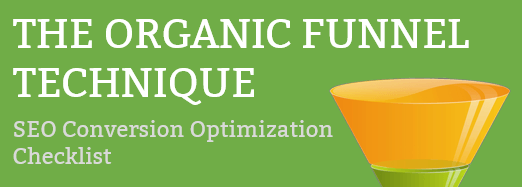
Engagement Rate (ER) is a term frequently tossed around in digital marketing circles because of GA4.
While most are familiar with common metrics like page views, click-through rates, and bounce rates, understanding the engagement rate’s significance can be the key to unlocking the true potential of your website.
Let’s dive into its definition, importance, and a brief story that illustrates its value.
Watch The Engagement Rate Podcast Video
What is Engagement Rate?
Engagement Rate is a metric used to measure the level of interaction users have with your content. For websites, it is often calculated by taking the total engagement actions (viewing a page longer than 10 seconds AND a conversion or 2 page views or screen views) and dividing it by the total number of visitors or views, then multiplying by 100 to get a percentage. The conversion can be anything you define as a goal within GA4.
The simple formula is:
This gives a clearer picture of how involved your audience is with your content beyond just viewing it.
Why is Engagement Rate Important?
- User Satisfaction: A high engagement rate generally indicates that visitors find your content valuable and relevant. They’re not just skimming and leaving – they’re interacting and connecting.
- SEO Benefits: Search engines like Google prioritize content that users find engaging. The more your content resonates, the better your chances of ranking higher.
- Feedback Mechanism: Monitoring ER can help pinpoint which aspects of your content are most captivating, allowing for optimization.
- Conversion Pathway: Engaged users are more likely to progress down the conversion funnel. A visitor who spends more time on your site or interacts with it is more likely to subscribe, buy a product, or take any desired action.
A Tale of Two Websites: An Engagement Rate Story
Imagine two online travel bloggers, Alice and Bob. Both have roughly the same number of monthly visitors, around 10,000.
Alice frequently receives comments, her articles are shared on social media, and her audience often clicks through multiple pages on her site. After analyzing her data, Alice finds her engagement rate to be 20%.
On the other hand, Bob gets minimal comments, fewer shares, and most users leave his site after viewing only one page. His engagement rate? A mere 5%.
Despite having the same number of visitors, Alice’s website is clearly more engaging. Over time, Alice notices more collaboration opportunities, higher ad revenues, and a growing community. Meanwhile, Bob, despite his best efforts in attracting traffic, struggles to monetize or expand his platform.
Alice’s high engagement rate not only showcases her content’s relevance but also boosts her SEO, driving even more organic traffic. Bob, realizing this, starts investing more in understanding his audience, improving content quality, and encouraging user interaction, aiming to increase his own engagement rate.
Bounce Rate vs. Engagement Rate
Google Analytics 4 (GA4) has introduced a series of changes and new features when compared to its predecessor, Universal Analytics (UA). Among these changes is how user engagement and interactions with web content are measured and understood. Here’s a breakdown of the differences between Bounce Rate in Universal Analytics and Engagement Rate in GA4:
Bounce Rate (Universal Analytics)
Definition: Bounce rate in Universal Analytics refers to the percentage of single-page sessions in which there was no interaction with the page. A bounced session has a duration of 0 seconds.
Interpretation: A high bounce rate generally indicates that a user landed on a page and left without interacting with any element or navigating to another page on the same website. While a high bounce rate was often viewed negatively (e.g., the content wasn’t engaging), it wasn’t always the case. For instance, if a user landed on a blog post, read the entire content, and then left, it would still be considered a bounce despite the user deriving value from the page.
Engagement Rate (Google Analytics 4)
Definition: GA4 moves away from the bounce rate and introduces a new way of understanding user interaction called Engagement Rate. Engagement is determined based on specific criteria. In GA4, a user is considered engaged if they:
-
- Stay on the page for 10 seconds or more.
- Have two or more page views in a session.
- Engage in an event like a click.
Interpretation: Engagement Rate provides a more nuanced view of how users interact with content. Just because a user didn’t navigate to a second page doesn’t mean they weren’t engaged. If they spent time on the site or interacted with an element, GA4 would recognize this as engagement. This approach helps reduce the instances where valuable interactions were mistakenly labeled as bounces in Universal Analytics.
The shift from Bounce Rate to Engagement Rate in GA4 emphasizes a more comprehensive understanding of user behavior. Instead of focusing on what users aren’t doing (i.e., not navigating to a second page), GA4 seeks to understand and measure positive user interactions, providing a clearer picture of user engagement on websites.
In Conclusion
While various metrics can offer insights into website performance, engagement rate stands out as a crucial indicator of user interest and content effectiveness. As the digital landscape becomes more saturated, fostering a genuine connection with your audience is more vital than ever.
Don’t just aim for views; strive for engagement to increase your conversions.

